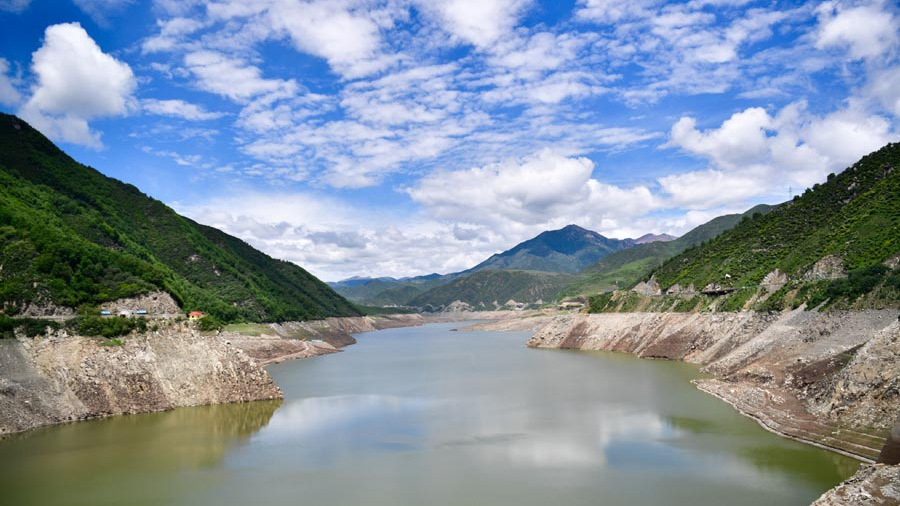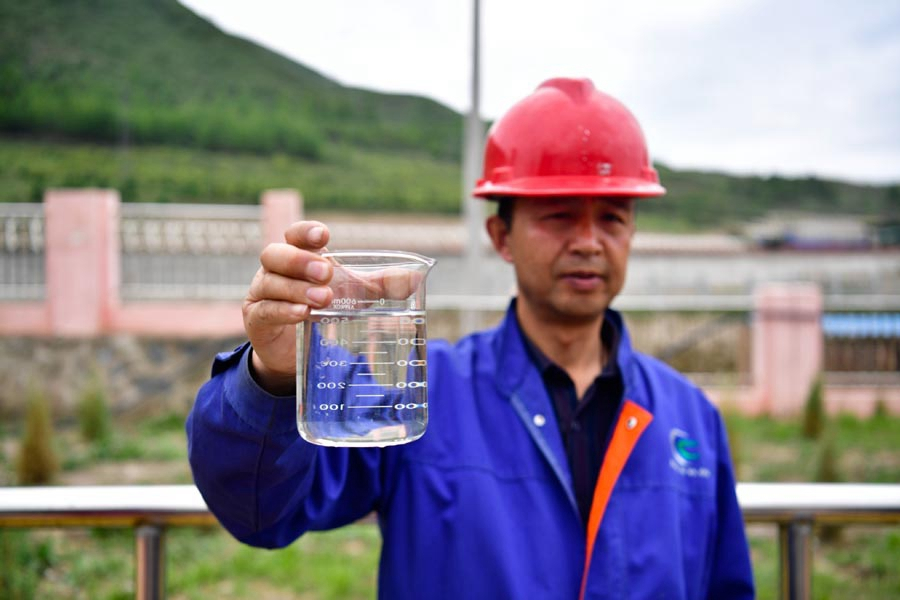

Heiquan Reservoir, located in Datong Hui and Tu Autonomous County, Xining City, northwest China's Qinghai Province, is an important water source for locals. / Xinhua Photo via China Daily
Home to China's three major rivers - Yangtze River, Yellow River and Lancang River - northwest China’s Qinghai Province is hailed as the "Water Tower of China" and plays an important role in the country's overall water ecology, by providing more than 60 billion cubic meters of water annually to over 20 provincial areas across the country.
The Huangshui River, the biggest tributary of the Yellow River, is known as the "mother river" of Qinghai. Around two thirds of Qinghai’s population resides along the river.
For many years, pollution has been a problem in the Huangshui River, but enhanced efforts in recent years resulted in a positive evolution in water quality. Now, more than 94 percent of Qinghai's water is suitable for human consumption .

The improved ecological environment of Heiquan Reservoir in northwest China’s Qinghai Province. /Xinhua Photo via China Daily
Heiquan Reservoir, located in Xining's Datong Hui and Tu Autonomous County, supplies water for more than one million residents. Measures such as relocating residents near the reservoir and barring chemical vehicle traffic were taken to ensure water safety.
"Since 2014, the government has spent 240 million yuan ($35 million) relocating more than 2,900 people in three villages near the reservoir," said Long Xizhou, deputy county chief of Datong.

A worker shows a treated sample of water at the sewage treatment plant in Huangyuan County of Xining. /Xinhua Photo via China Daily
Statistics from Qinghai's Ecology and Environment Department shows the province has built a total of 52 sewage treatment plants, covering all counties.
The sewage treatment plant at Huangyuan County, Xining City, has been treating domestic sewage of more than 1.3 million local residents, since its establishment in 2009.
After further upgrading facilities and technology in 2018, the plant now processes 8,000 to 12,000 tons of water per day, according to Li Xin, a project manager at the plant.

Tail water wetlands at the sewage treatment plant in Huangyuan County in Xining. /Xinhua Photo via China Daily
Livestock and poultry breeding is an important industry in Huzhu Tu Autonomous County in Haidong City, but it was also one of the Huangshui River pollution contributors.
Local authorities banned all breeding activities within 400 meters of the Shatangchuan River (a tributary of the Huangshui River) in 2017. There were 32 farms relocated to places far from the water source, according to Kong Xiaoyu, a deputy to the National People's Congress.
"Water quality of the river improved significantly after the rectification," she said.
(Cover image shows the Heiquan Reservoir via VCG.)
(If you want to contribute and have specific expertise, please contact us at nature@cgtn.com)

Copyright © 2018 CGTN. Beijing ICP prepared NO.16065310-3
Copyright © 2018 CGTN. Beijing ICP prepared NO.16065310-3